Sectarian dissonance in Islam can be traced back to the death of Prophet Mohammad in 632 AD. The anointment of the successor to Prophet did set the stage for an eternal conflict which witnessed its violent calcification in 680 AD with the martyrdom of Hazrat Imam Husain, the Prophet Mohammed’s grandson at Karbala1. The spasms of inter-sect violence are neither new nor spatially isolated to the Middle East. However, the only locus of sectarian conflict being depicted presently is the turmoil in Yemen. The recent drone attacks on Saudi Oil Facility clearly illustrate the global blow back of such sectarian violence2. With increasing frequency, media accounts of the civil war in Yemen and Syria describe it in sectarian terms. This violence in Middle East and West Asia has inflamed sectarian tension throughout the Gulf and beyond. Closer home, headlines have warned that the sectarian divide in Pakistan is widening and intensifying3.
The variegated conflict spectrum in Middle East and West Asia has led to tragic loss of life, livelihood and limb; there are many questions begging for answers. One of these questions is; why have the terms ’sectarianism’, ‘sectarian fault lines’, ‘sectarian fissures’ become so prominent in the political discourse? Do religions have the capability within them to justify or even encourage violence? Are religious doctrinal differences primarily responsible for stoking such fear and hatred? What roles have state, sub-state and non-state actors played in fomenting sectarian discord and especially so in our neighborhood in Pakistan?
Globally, sectarianism came back to fore following an offensive by the Islamic State in Iraq and Syria (ISIS) in early June 2014, which resulted in the fall of Mosul and a string of Iraqi towns4. ISIS and its extreme measures against other sects in the region including Yazidis and Kurds and of course the Shias shook the conscience of the world. These land grabs also resulted in apportioning of blame to the sectarian differences between Iraq’s Shia and Sunnis and predicting the fragmentation of Iraq along sectarian lines. To bring the cases of Iraq and Syria into a greater Asian context, it is perhaps better to disaggregate sectarianism from anti-Shi’ism. In Syria and Iraq, regime security and intra-state conflict has coalesced along sectarian lines, rather than sectarian differences serving as the casual factor in creation of sectarian states or sectarian militias. In contrast, the existence of Salafi inspired movement in Pakistan that see all Shia as heretics to be actively targeted occurs outside the politics of regime survival and is not a new phenomenon5.
Rise of Sipah-e-Sahaba in Pakistan in the 1980s and its attacks on Pakistan’s Shia community were more a result of a proxy war between Saudi Arabia and Iran than anything else6. The retaliation by Pakistan’s Shia community has been feeble and mostly consisted of small-scale attacks. The Hazara Shia community in Pakistan has failed to create a sectarian movement to defend itself against attacks in Quetta. This is indicative that the problem in Pakistan is more of an active anti-Shia campaign provoking Shia responses. Anti-Shi’ism in Pakistan differs from the situation in Iraq, Yemen and Syria, where sectarianism revolves around the nature of power distribution within the state. Irrespective of the agenda driving the sectarianism and anti-Shiite sentiment, funding and export of ideology in form of financial support to madrasas from Saudi Arabia and Iran are the casus belli for it. Sectarianism in Iraq, Yemen and Syria has emerged as a response to patronage politics and conflicts over scarce resources fuelled by Saudi Arabia and Iran via local proxies. While both countries have encouraged missionary activities to either combat or promote sectarianism, it may not be too late in the day to see the domino effect of this power play transcend closer home to Pakistan and new kind of great game emerge within Pakistan. Baluchistan is an apt playground for Iran and Saudi Arabia to flex their muscles. Meanwhile, the future of Afghanistan hangs by a veritable thread and dilly dalliance of US plans in Afghanistan coalescing with resurgence of Taliban would open a Pandora’s Box of sectarian strife in the region with ripples easily affecting Pakistan.
Pakistan, since it’s very inception, has been no stranger to conflicts, but in the last two decades Islamabad has had to face the new waves of terrorism and sectarianism7. Pakistan emerged as a Muslim majority state having more than 90 percent of Muslim population. Jinnah had in 1948 at Dacca said, “If you want to build up yourself into a Nation, for God’s sake give up this provincialism. Provincialism has been one of the curses; and so is Sectionalism - Shia, Sunni etc8. During Pakistan’s first three decades as a new state, the emergence of political organization along sectarian lines was a rather remote possibility. Pakistan’s Shia minority couldn’t claim to be oppressed with many of the Muslim League’s early leaders being Shias. 9 The community was prominently represented among the dominant landholders, the military, local and federal bureaucracy as well as in the industrial and entrepreneurial elite. Each successive Pakistani government involved Shia ministers. Despite occasional riots during the month of Muharram, most Shias in Pakistan did not feel discriminated against10. The first spark of sectarian strife was Ahmadiya riots in 1953 at Lahore. The internal simmering were kept under the lid by martial law imposed first by Ayub Khan and then by Zia who also charioteered a state sponsored process of Islamization.
However, occurrences in the vicinity like the Iranian revolution and empowerment of Shia community by Iranian proxies, influx of Afghan refugees to Pakistan as a result of Soviet invasion and the role played by Pakistan in Soviet Afghan war calcified the sectarian fault lines in Pakistan. Tehrik-e-Nifaz-e-Fiqh-e-Jafaria (TNFJ) was formed in 197911 under the leadership of Allama Jaffer Hussein as a defensive safe guard mechanism against Zia’s oppressive policies. The fear that gripped Shias was of meeting the same fate as Ahmadiyas; of being declared non-Muslims. Historically in Pakistan, Shiite militancy has remained reactive and selective till recently. A paradigm shift however has occurred with thousands of Pakistani Shiites being recruited and trained by Tehran12. The landscape of sectarian militancy is likely to undergo a momentous transformation with a possibility of a head-on confrontation between militant fronts of the two opposing sects. Future impact of this Shiite mobilization in Pakistan could transform the local sectarian conflict. There are increasing prospects for ISIS or proxies of Iran’s IRGC of to penetrate and exploit local militant groups to their respective political, economic and religious agendas. Interestingly so this shadow boxing is best played out in Baluchistan, far from the Punjabi heartland and with minimal collateral damage at least of what matters.
With 44 percent of Pakistan’s land mass and only 6 percent populace of which only 3.5 percent are indigenous Baluch13, the vast open spaces and isolated valleys are ideal field laboratories for social engineering and theological experimentation of all kinds. Baluch society with its indigenous Baluch and migrant Pashtuns and Hazaras are being cornered by anti-Shia and pro-Punjabi groups in all realms of societal existence. This is bringing to boil a cauldron which since 1947 had only been simmering - coming to boil once in a while, but of late it seems to have the latent energy to blow the tight lid which has been placed by the Pak Deep State. The only ingredient missing for this cocktail to take a vitriolic tenor is lack of cohesion due to fractured ideologies and tribal loyalties. Sipah-e-Sahiba is running its largest seminary outside Punjab at the outskirts of Mastung with Baluch support against Hazara Shias who access Iran through this route.14 Pakistan has played a similar game here in Baluchistan to the one they played in Federally Administered Tribal Areas (FATA) wherein the indigenous societal norms of Pakhtunwali were trumped by Wahabi-Deobandi Islamization. The Balochmayar (code of honour) has been compromised by influx of Tabligi madrasas in Baluchistan during Gen Zia’s time, spurring sectarianism and Islamization as a counter-balance to nationalism amongst Baluch and their affinity to the Hazaras. 15 This targeting of Shias in Baluchistan was exploited by Iran and recruitment for a militia force commenced.
Pakistani Shias entered the Syrian conflict in 2013 in response to a rocket attack by Salafi militias on the shrine of Zainab16 in Damascus. That attack – comparable for many Shia to the destruction of the Church of Holy Sepulcher by Fatimid Caliph Al-Hakim Amr-Allah, in 1009, an event that paved the way for the Crusades – was the impetus for the formation of the Zainabiyoun Brigade17. The initial recruitment seems to have taken place at local levels in Shiite-dominated areas of Kurram Agency’s Parachinar town and Hangu with several people travelling to Syria via Iran18. The ‘Liwa Zainabyoun’ was raised under the IRGC. This development was seen as Iran’s effort to expand a regional network of Shiite militia organizations akin to Hezbollah19. Iranian patronage and a new law that offers citizenship to families of foreign fighters has further spurred recruitment20. There are several financial incentives for those who are willing to join; a monthly salary of roughly $1,000, 15 days of holidays every three months, compensation in terms of children’s education and yearly pilgrimage packages for family members to Iran, Iraq, and Syria in case the recruit is killed.21 Since many of the Shiite-dominated areas, specifically in the FATA and Baluchistan, are socio-economically disadvantaged, there is considerable financial incentive for the youth to take this path.
However, there are other radicalizing factors as well. The Shiite leaders point to the religious obligation to defend the holy shrines, including that of Zainab, from which the Zainabiyoun derive their name. Pakistani Shiite Muslims have also mostly been at the receiving end of the sectarian conflict, and many among the youth are willing to take up their arms against what they suspect is a systematic terror campaign against them. On the other hand, there is the state’s apparent inability to protect the Shiite community and its alignment with hardline Sunni groups’ triggers a fight or flight response. The Iranian IRGC taps into these grievances to bolster its fighting ranks against ISIS and also to increase its influence in the region. On the contrary the Wahabi influx22 in Pakistan has provided the fertile soil for ISIS to further take root and take over the Jihadi groups and provide it a sectarian agenda.
Shiite militancy in Pakistan over the years has remained asymmetrical and reactive in nature due to two factors. First, the realization that they were in numerical disadvantage, and secondly, the fact that population of the Sunni-majority country has always been opposed to the violent conflict23. However, the experience in the Syrian and Iraqi theater is likely to transform the nature of Shiite militancy in Pakistan much like the Afghan jihad served to embolden the Sunni-Deobandi militants in the 1990s. Just as the capabilities and ideologies of the Sunni-Deobandi militants were developed and forged by Saudi Arabian patronage in the Afghan jihad, the Shiite militants are going through a similar experience in Syria and Iran under the aegis of the IRGC. This new alliance between Shiite militants from around the Middle East can allow the Shiite militant groups in Pakistan to increase recruitment when these fighters return home and shift gears from a hitherto defensive to offensive warfa24.ISIS appears to be conscious of this possibility which is why one of its local affiliates, Lashkar-e-Jhangvi (LeJ), targeted the Shiites in Parachinar in December, 2015, warning that the locals should stop sending people to take part in the Syrian War25.
Return of Shiite militants to Pakistan will also be defined by how ISIS and its local affiliates, including LeJ, tread in the coming months and years with regards to their openly hostile intent towards the Shiite community in Pakistan. The ideology of ISIS vis-à-vis Shiite Muslims was defined by its ideologue Abu Musab Al Zarqawi. His strategic articulation was a total annihilation of apostates (including Shiite Muslims whom ISIS considers rafidha or rejecters)26. There is little evidence to suggest so far that ISIS strategy in Khurasan will be any different given the convergence of ideology with its local affiliates, including LeJ and other militant outfits. Much then will depend on the Pakistani state’s response and how it deals with returning Shiite militants on their return keeping in view Tehran’s desire to counter Saudi Arabia in the region. Given the geographical location, a large Shiite population, history of sectarian militant outfits and divergent interests and patronage of countries like Saudi Arabia and Iran, Pakistan remains a fault-line for potential escalation of regional rivalry. This could mean a dramatic intensification of sectarian conflict in Pakistan much like the 1980s and 1990s. While attempting to chart a neutral course, the Pakistani state has so far been even-handed when it comes to dealing with sectarian outfits; anti-Shiite militant outfits, were banned in November, 2016, and an off-shoot of Shiite group Lashkar-e-Mehdi, was also banned for recruiting Shiites to fight against ISIS in December, 201627.
Pakistan still seems to be grappling with an effective response strategy when it comes to plugging the recruitment of potential jihadis both by the ISIS and Iran for the Iraqi and Syrian theatre. ISIS has come under increasing pressure in Syria, and if Trump decides to stay in Afghanistan coupled with his turf wars with Taliban, it is bound to move towards Pakistan. The tightening of the noose on ISIS in Syria and victory for forces of President Assad would infuse jubilation and confidence amongst the Shiite militia that will inevitably return to Pakistan with improved quality, enhanced quantity of fighting ranks, better finances and more importantly a hardened ideology. The gloves between Saudi Arabia and Iran are more or less off in Yemen. While the geo-economics of the globe linked to oil may not exacerbate the situation, both nations would seek other playing fields to prove their supremacy and extract revenge. These circumstances could thus set the stage for transforming the sectarian conflict in Pakistan. Pakistani state seems unprepared for the escalation in violence funded and propped by foreign ideological founts. The hunting with hounds and running with hares philosophy of the present dispensation with respect to Iran and Saudi Arabia would be put to test as sides would have to be taken. The unilateral focus on Jammu and Kashmir has further narrowed Pakistan’s straw pipe vision a few more notches and allowed the Wild West of Pakistan to become some more wild and macabre; it may so happen that it would be beyond the competencies of Pakistan to handle the medusa of sectarianism.
End Notes :
- Asma Khan Mahsood, History of Sectarianism in Pakistan: Implications for Lasting Peace, Journal of Political Sciences & Public Affairs, 2017 https://www.longdom.org/open-access/history-of-sectarianism-in-pakistan-implications-for-lasting-peace-2332-0761-1000291.pdf accessed on 21 Sep 19.
- Interview with Peter Koenig; https://www.globalresearch.ca/impact-yemeni-attack-saudi-aramco-oil-facilities/5689430
- https://www.dw.com/en/pakistan-deadly-bomb-blast-at-sufi-shrine-in-lahore/a-48646054 accessed on 21 Sep 19.
- Seth G. Jones, James Dobbins, Daniel Byman, Christopher S. Chivvis, Ben Connable, Jeffrey Martini, Eric Robinson, Nathan Chandler, Rolling Back Islamic State, https://www.rand.org/content/dam/rand/pubs/research_reports/RR1900/RR1912/RANDRR1912.pdf accessed on 20 Sep 19.
- Ibrahim Marashi, Re-conceptualizing Sectarianism in the Middle East and Asia https://www.mei.edu/publications/reconceptualizing-sectarianism-middle-east-and-asia accessed on 14 Aug 19.
- Center for International Security and Cooperation (CISAC), at Freeman Spogli Institute for International Studies https://web.stanford.edu/group/mappingmilitants/cgi-bin/groups/view/147?highlight=April+19 accessed on 17 Aug 19.
- International Crises Group (2005) The state of sectarianism in Pakistan. https://www.crisisgroup.org/asia/south-asia/pakistan/state-sectarianism-pakistan accessed on 12 Aug 19.
- Kalin M, Siddiqui N (2014) Religious Authority and the Promotion of Sectarian Tolerance in Pakistan. United States Institute of Peace https://www.usip.org/sites/default/files/SR354_Religious-Authority-and-the-Promotion-of-Sectarian-Tolerance-in-Pakistan.pdf accessed on 12 Sep 19.
- Abou Zahab, “The politicization”, p. 97. For a similar view, see also M. D. Ahmed, “The Shi‘is of Pakistan”, in Shi‘ism, Resistance, and Revolution, (ed.) M. Kramer (Boulder, 1987), pp. 280–281.
- M. Abou Zahab, “The regional dimension of sectarian conflicts in Pakistan”, in Pakistan, Nationalism without a Nation, (ed.) C. Jaffrelot (London, 2002), p. 116.
- Refugee Review Tribunal, Australia, https://www.refworld.org/pdfid/4b6fe2e30.pdf accessed on 12 Sep19.
- Zubair Azam, Khuram Iqbal, Shiite Mobilization and the Transformation of Sectarian Militancy in Pakistan, March 29, 2017. https://www.mei.edu/publications/shiite-mobilization-and-transformation-sectarian-militancy-pakistan accessed on 19 Sep 19.
- Tilak Devasher, Pakistan; The Baluchistan Conundrum, Harper Collins Publication, 2019, pg 23.
- Ibid pg 40.
- Ibid pg 31.
- Sayyidah Zaynab Mosque is a mosque located in the city of Sayyidah Zaynab, in the southern suburbs of Damascus, Syria. According to Twelver Shia Muslim tradition, the mosque contains the grave of Zaynab, the daughter of ‘Alī and Fātimah and granddaughter of Muhammad. The tomb became a center of religious studies in Syria and a destination of mass pilgrimage by Shia Muslims from across the Muslim world, beginning in the 1980s.
- https://jamestown.org/program/the-zainabiyoun-brigade-a-pakistani-shiite-militia-amid-the-syrian-conflict/ accessed on 21 Sep 19.
- Nazar-ul-Islam, “The New Jihad,” Newsweek Pakistan, January 23, 2016, http://newsweekpakistan.com/the-new-jihad/. accessed on 17 Sep 19.
- Phillip Smyth, “The Shiite Jihad in Syria and its regional effects,” The Washington Institute for Near East Policy (WINEP), Policy Focus 138, February 2015, accessed on 21 Sep 19.
- “Iran may grant citizenship to Pakistani ‘volunteers’ fighting in Syria and Iraq,” Dawn, May 2, 2016, accessed 12 Aug 19.
- Babak Dehghanpisheh, “Iran Recruits Pakistani Shi’ites for Combat in Syria.” https://www.mei.edu/publications/shiite-mobilization-and-transformation-sectarian-militancy-pakistan accessed on 13 Sep 19.
- Shamil Shams,The 'Wahabi Republic' of Pakistan; https://www.dw.com/en/the-wahabi-republic-of-pakistan/a-16191055 accessed on 22 Sep 19.
- Khaled Ahmed, Sectarian War: Pakistan’s Sunni-Shia Violence And Its Links To The Middle East (London, UK: Oxford University Press, 2011) 160.
- https://www.iranobserver.org/pakistani-shias-being-trained-by-iran-for-a-regional-fighting-force accessed on 14 Sep 19.
- Mehdi Hussain, “At least 23 killed, 30 injured in Parachinar blast,” The Express Tribune, Dec 13, 2015, accessed 12 Aug 19, https://tribune.com.pk/story/1009233/four-dead-several-wounded-in-parac…
- Nibras Kazimi, “Zarqawi’s Anti-Shia Legacy: Original or Borrowed?” in Hillel Fradkin. Husain Haqqani and Eric Brown (eds.), Current Trends in Islamist Ideology, Volume 4 (2006): 53.
- Qadeer Tanoli, “Recruitment for Syria: Interior ministry bans sectarian outfit,” The Express Tribune, January 22, 2017, accessed 22 Sep 19 https://tribune.com.pk/story/1303150/recruitment-syria-interior-ministry.
(Col Harsh Vardhan Singh has commanded a battalion and has operational experience both in CI/CT operations, besides serving with UN Mission. The officer is an avid writer and his articles are published in various journals)
(The paper is the author’s individual scholastic articulation. The author certifies that the article/paper is original in content, unpublished and it has not been submitted for publication/web upload elsewhere, and that the facts and figures quoted are duly referenced, as needed, and are believed to be correct). (The paper does not necessarily represent the organisational stance... More >>
Image Source : http://www.pakistanreader.org/images/events/big/_1909620400_Shiakilling1.jpg


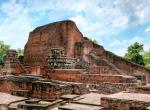
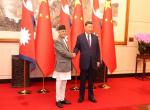
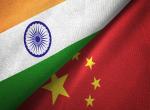
_1_0.png)
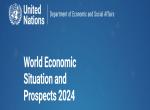
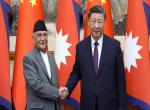


Post new comment